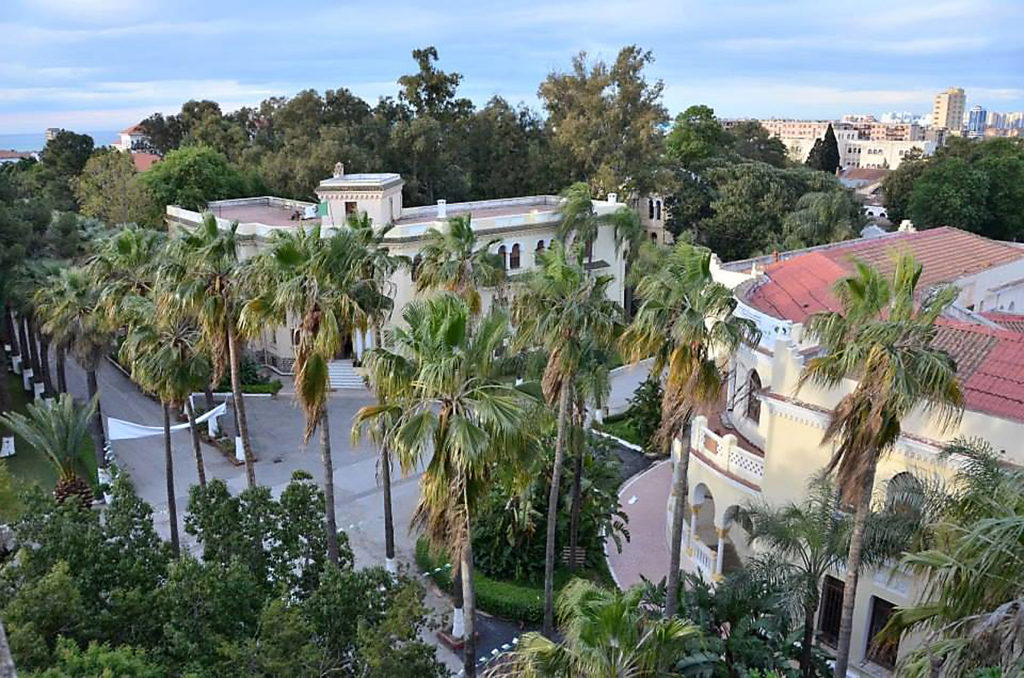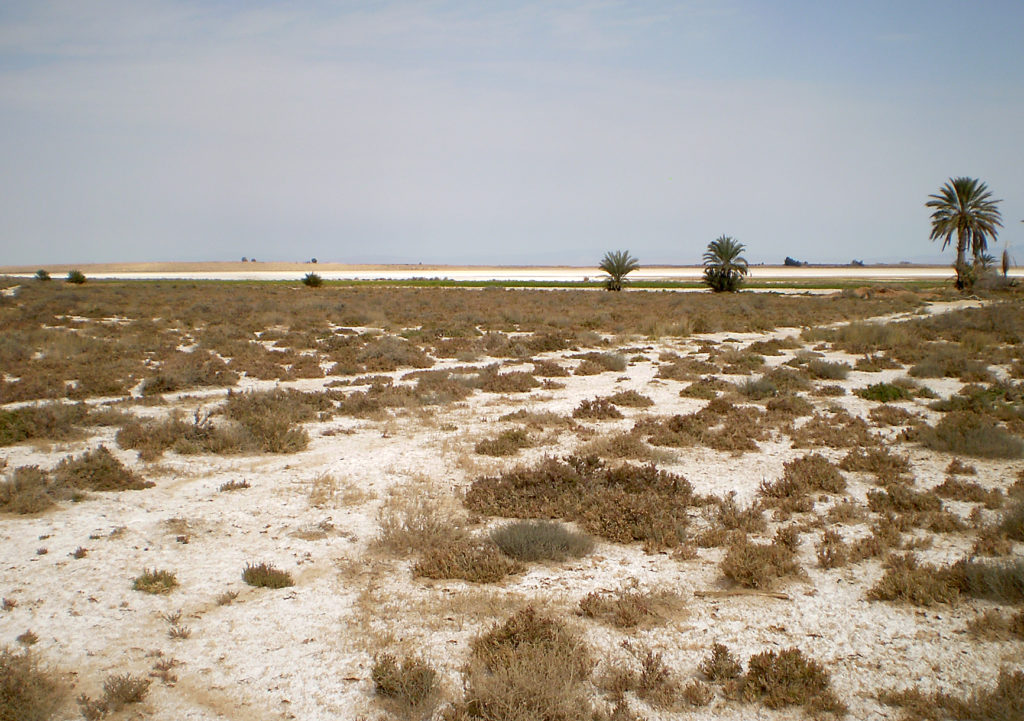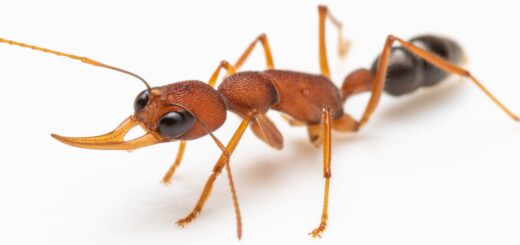The Latitude Project – 30° North – Algeria

Ghania Barech, September 2013 in Axams, Innsbruck (Central European Workshop of Myrmecology, 2013 ; © M. Khaldi) 
Mourad Khaldi, 9 March 2011, palm grove near Chott El Hodna (© M. Khaldi)
Myrmecological News Blog has launched The Latitude Project – by using latitudes to circle the globe, we collect impressions of the ants of the world in terms of their diversity, ecology, life history, and conservation biology. Having started with 60° North, we shine flashlights on the ants of every continent passed by interviewing ant researchers who live or study there. Our fifth interview is with Ghania Barech & Mourad Khaldi in Algeria, 30° N, Africa (following Riitta Savolainen in Finland, Javier Ibarra-Isassi and Jean-Philipp Lessard in Canada, Dmitry Dubovikoff in Russia, and Rachel Atchison and Leo Ohyama in Florida).
An Interview compiled by Florian M. Steiner

MNB: What are your GPS coordinates?
GB & MK: In Algeria, which is the biggest country in Africa (2.382 millions km2), we choose three regions for myrmecological studies: the northern part of Algeria (Algiers), Kabylie, and a steppic region in the North-East (Hodna).
1) Northern part of Algeria (Algiers): 36° 43′ N, 03° 08′ E, in a park near the facilities of the Higher National Agronomic School (Fig. 1)

2) Region of Kabylie (Fig. 2): Djurdjura at 36° 27′ N, 04°06′ E, Akfadou at 36° 62′ N, 04°61” E, and Yakouren 36° 45′ N, 04° 24′ E
3) Steppic region in the North-East (Hodna): 35° 43’ N, 4°33 E

MNB: What are the annual mean temperature and the annual precipitation in your area?
GB & MK: 1) Northern part of Algeria (Algiers): Temperatures range from 10.5 to 26.7 °C, with an annual mean of 18.2 °C. Precipitation in Algiers is variable, with a mean of 646 mm and ranging between 333 and 884 mm per year.
2) Region of Kabylie: Annual mean precipitation ranging between 750 and 1200 mm, can reach 1350 mm.
3) Steppic region in the North-East (Hodna): Annual mean temperatures are 19.4 °C (ranging from 8.7 °C to 31.6 °C). Precipitation is variable, with a mean of 207.5 mm and ranging between 105 and 348 mm per year. The dry period can last 11 months. The local climate is classified as a lower arid with a cold winter.
MNB: Which ant subfamilies occur there?
GB & MK: Eight subfamilies are noted in Algeria: Dolichoderinae, Dorylinae, Leptanillinae, Ponerinae, Formicinae, Myrmicinae, Proceratiinae, Pseudomyrmecinae. A total of 217 ant species are found in this country (Bolton 2020). At Higher National Agronomic School, we have collected 20 species belonging to three subfamilies Dolichoderinae, Formicinae, and Myrmicinae (Barech & al. 2011).
In the region of Kabylie, 28 species are noted (with the subfamilies of Dolichoderinae, Formicinae, and Myrmicinae), and in the steppic region, Hodna, 30 species are collected (belonging to Dolichoderinae, Dorylinae, Ponerinae, Formicinae, and Myrmicinae) (Barech 2014). We noted the presence of Lioponera longitarsus for the first time in an olive grove of the Hodna region (Barech & al. 2017a).
MNB: What is a typical natural habitat in your area?
GB & MK: Various natural habitats are found in Algeria because of the broad diversity of ecosystems in this country (Sahara desert, forest, steppe), but the most important one is the so-called Chotts (salt lakes).
In the steppic region, Chott El Hodna (Fig. 3, Video 1; with an area of about 362,000 ha) is a habitat that is significant to conservation biology (Ramsar site) and of great interest to ecologists, especially because it is a site where post-breeding birds congregate. Supplied by at least 22 main streams and freshwater springs, this salt lake is covered with water only in winter. In summer, it is dry and salty, with a salt crust covering the whole area (Fig. 4). The soil has a sandy texture and medium salinity and contains little organic matter.
It is one of a series of wetland complexes composed of vast and shallow dry saline lakes often seasonally wet that occur in the semiarid Algerian Hauts Plateaux located between the Saharan Atlas and the northern narrow coastal plains.
Precipitation in Chott El Hodna is variable, with a mean of 128.9 mm and ranging between 150 and 200 mm per year. Annual mean temperatures are 20.6 °C (minima: -0.6 °C to 6.2 °C; maxima: 33.0 °C to 37.9 °C). Drought can last 11 months to a year.

Video 1: Panoramic view of Chott El Hodna (27 April 2011; © M. Khaldi).

MNB: How many ant species typically occur in this habitat?
GB & MK: A total of 24 ant species are noted in Chott El Hodna belonging to five subfamilies: Dolichoderinae, Dorylinae, Ponerinae, Formicinae, and Myrmicinae (Barech & al. 2016, Barech & al. 2017b, Cagniant & al. 2020). In more detail:
Dolichoderinae: Tapinoma simrothi
Myrmicinae: Messor hodnii (recently described), Messor medioruber, Messor arenarius, Messor striatulus, Monomorium salomonis, Cardiocondyla nigra, Tetramorium biskrense, Goniomma cf. thoracica, Goniomma cf. barbaricum, Pheidole pallidula, Temnothorax pallidipes (new record in press), Monomorium major (=Trichomyrmex santschii), Solenopsis occipitalis
Dorylinae: Dorylus fulvus
Formicinae: Plagiolepis sp., Lepisiota frauenfeldi, Cataglyphis bicolor, Cataglyphis fortis (new record in press), Cataglyphis savignyi, Cataglyphis bombycinus, Cataglyphis albicans, Bajcaridris sp., Camponotus atlantis
MNB: What is your favourite ant from your area, and what fascinates you most about it?
GB & MK: Four species caught our attention, and we have been lucky to collect them: Cardiocondyla nigra (second record from Algeria), two workers of the rare genus Bajcaridris, rediscovering of Monomorium major (= Trichomyrmex santschii), and the latest one is a new ant for science: Messor hodnii (recently described).
Our favourite ant from this area is Messor hodnii (Figs. 5, 6, Video 2; for details, see Barech & al. 2020).

Fig. 5: Lateral view of the recently described species Messor hodnii (© G. Coccodoro). 
Fig. 6: Head of Messor hodnii, front view (© G. Coccodoro).
Video 2: Behaviour of workers of the arenicolous ant Messor arenarius at a nest entrance in Chott El Hodna (30 April 2011; © M. Khaldi).
MNB: Where does your favourite ant species nest and how many workers live in one nest, roughly?
GB & MK: Unfortunately, we have no information on the biology of Messor hodnii or on where it has its nest. This ant is probably nocturnal, as its large eyes suggest. It has a well-developed psammophore (Fig. 7), which allows it to be classified among arenicolous (sandy) and xerophilic ants. The presence of a psammophore is a morphological characteristic of adaptation to the sandy texture often found in certain desert ants such as in M. arenarius and M. caviceps. New investigations are planned to collect more data concerning this ant.

MNB: Do you know its mating strategy, how new nests are founded, and how many queens are in one nest?
GB & MK: No data.
MNB: What do workers feed on? What do they feed to larvae?
GB & MK: Messor hodnii is granivorous as shown by the morphology of its mandibles.
In the habitat of M. hodnii, plant communities are primarily composed of 10 plant families: Asteraceae (Atractylis flava), Chenopodiaceae (Atriplex halimus and Halocnemum strobilaceum), Brassicaceae (Ammosperma sp.), Poaceae (Oropetium africanum and Aeluropus littoralis), Geraniaceae (Erodium sp.), Plantaginaceae (Plantago albicans), Plumbaginaceae (Limonium pruinosum and Limoniastrum sp.), Fabaceae (Retama retam), Terebinthaceae (Frankenia thymifolia) and Thymelaeaceae (Thymelaea microphylla). There is a strong dominance of the Chenopodiaceae, represented by halophytic species (Fig. 8).

MNB: Is the species territorial, and if so, how does it defend its territory?
GB & MK: No data, unfortunately.
MNB: How common is your favourite ant, and is it threatened?
GB & MK: The workers of M. hodnii were collected by pitfall trapping and hand collecting. Several myrmecological investigations were made in areas near the salt lake Chott El Hodna to find additional individuals of Messor hodnii in 2011, 2013, 2016, and 2019 (unpublished data). Various sampling methods including pitfall traps, hand collecting, Berlese, soil washing, and baits were used, but none of these methods found new specimens.
Chott El Hodna has suffered a serious environmental degradation in the last six years (industrial wastes, agricultural activities, intense pastoral activity). All these factors contribute to the loss of habitat, which increases the degree of vulnerability of this new ant species. In our situation, the new species is classified as critically endangered (CR) with the sub-criterion D: very small population or very restricted distribution (e.g., M. hodnii was searched for at two localities at Chott El Hodna, 20 km apart, but without success).
References
Barech, G., Khaldi, M., Doumandji, S. & Espadaler, X. 2011: One more country in the worldwide spread of the wooly ant: Tetramorium lanuginosum in Algeria (Hymenoptera: Formicidae). – Myrmecological News 14: 97-98.
Barech, G. 2014: Contribution à la connaissance des fourmis du Nord de l’Algérie et de la steppe: taxonomie, bio-écologie et comportement trophique (cas de Messor medioruber). – PhD thesis, Ecole Nationale Supérieure Agronomique, El Harrach, Alger, 248 pp + annexes.
Barech, G., Khaldi, M., Ziane, S., Zedam, A., Doumandji, S., Sharaf, M. & Espadaler, X., 2016: A first checklist and diversity of ants (Hymenoptera: Formicidae) of the saline dry lake Chott El Hodna in Algeria, a Ramsar Conservation Wetland. – African Entomology 24: 143-152.
Barech, G., Khaldi, M. & Espadaler, X. 2017a: First report of Lioponera longitarsus Mayr, 1879 (Hymenoptera: Formicidae) in Algeria: an exotic or a rare native ant species from North Africa? – African Entomology 25: 428-434.
Barech, G., Khaldi, M., Espadaler, X. & Cagniant, H., 2017b: Le genre Monomorium (Hymenoptera, Formicidae) au Maghreb (Afrique du nord): clé d’identification, avec la redescription de la fourmi Monomorium major Bernard, 1953 et nouvelles citations pour l’Algérie. – Boletín de la Sociedad Entomológica Aragonesa 61: 151-157.
Barech, G., Khaldi, M., Espadaler, X. & Cagniant, H. 2020: Taxonomic revision of the genus Messor (Hymenoptera, Formicidae) in the Maghreb and description of Messor hodnii sp. n. a new ant species found in Algeria.– Revue suisse de Zoologie127: 9-19. (in French)
Bolton B. 2020: An online catalog of the ants of the world. – <http://antcat.org>, retrieved on 26 July 2020.
Cagniant, H., Barech, G. & Khaldi, M. 2020: Nouvelle clé des espèces de Monomorium Mayr du Maghreb et des Canaries. Boletín de la Sociedad Entomológica Aragonesa 66: 172-176.









Recent Comments